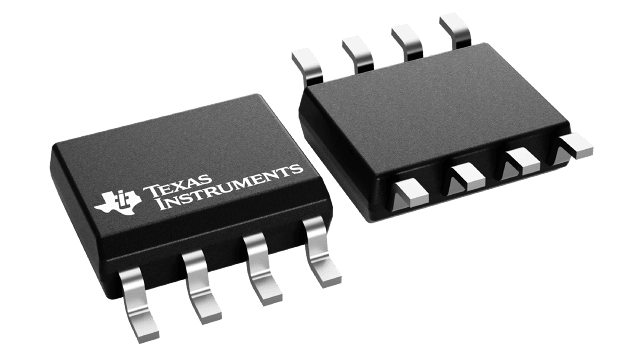| Protocols | CAN |
| Number of channels (#) | 1 |
| Supply voltage (V) | 3 to 3.6 |
| Bus fault voltage (V) | -36 to 36 |
| Signaling rate (Max) (Mbps) | 1 |
| Rating | High Temp |
| Operating temperature range (C) | -55 to 175, -55 to 210 |
| Low power mode | Silent |
| Common mode voltage (V) | -7 to 12 |
| Isolated | No |
- Bus-Pin Fault Protection Exceeds ±36 V
- Bus-Pin ESD Protection Exceeds 16-kV Human
Body Model (HBM) - Compatible With ISO 11898
- Signaling Rates(1) up to 1 Mbps
- Extended –7-V to 12-V Common-Mode Range
- High-Input Impedance Allows for 120 Nodes
- LVTTL I/Os Are 5-V Tolerant
- Adjustable Driver Transition Times for Improved
Signal Quality - Unpowered Node Does Not Disturb the Bus
- Low-Current Standby Mode: 200 μA Typical
- Power-Up and Power-Down Glitch-Free Bus
Inputs and Outputs- High-Input Impedance With Low VCC
- Monolithic Output During Power Cycling
- Loopback for Diagnostic Functions Available
- DeviceNet? Vendor ID #806(1)
- APPLICATIONS
- Down-Hole Drilling
- High-Temperature Environments
- Industrial Automation
- DeviceNet Data Buses
- Smart Distributed Systems (SDS?)
- SAE J1939 Data Bus Interfaces
- NMEA 2000 Data Bus Interfaces
- ISO 11783 Data Bus Interfaces
- CAN Data Bus Interfaces
- Controlled Baseline
- One Assembly or Test Site
- One Fabrication Site
- Available in Extreme (–55°C to 210°C)
Temperature Range2 - Extended Product Life Cycle
- Extended Product-Change Notification
- Product Traceability
- Texas Instruments high-temperature products use
highly optimized silicon (die) solutions with
design and process enhancements to maximize
performance over extended temperatures.
(1) The signaling rate of a line is the number of voltage transitions that are made per second expressed in the units bps (bits per second).
2 Custom temperature ranges available
All other trademarks are the property of their respective owners
The SN65HVD233 is used in applications employing the controller area network (CAN) serial communication physical layer in accordance with the ISO 11898 standard, with the exception that the thermal shutdown is removed. As a CAN transceiver, the device provides transmit and receive capability between the differential CAN bus and a CAN controller, with signaling rates up to 1 Mbps.
Designed for operation in especially harsh environments, the device features cross wire, overvoltage, and loss-of-ground protection to ±36 V, with common-mode transient protection of ±100 V. This device operates over a ?7-V to 12-V common-mode range with a maximum of 60 nodes on a bus.
If the common-mode range is restricted to the ISO 11898 standard range of ?2 V to 7 V, up to 120 nodes may be connected on a bus. This transceiver interfaces the single-ended CAN controller with the differential CAN bus found in industrial, building automation, and automotive applications.
RS (pin 8) provides for three modes of operation: high-speed, slope control, or low-power standby mode. The high-speed mode of operation is selected by connecting RS directly to ground, thus allowing the driver output transistors to switch on and off as fast as possible with no limitation on the rise and fall slope. The rise and fall slope can be adjusted by connecting a resistor to ground at RS, because the slope is proportional to the output current of the pin. Slope control is implemented with a resistor value of 10 kΩ to achieve a slew rate of ? 15 V/μs, and a value of 100 kΩ to achieve ? 2 V/μs slew rate. For more information about slope control, refer to the Application and Implementation section.
The SN65HVD233 enters a low-current standby mode, during which the driver is switched off and the receiver remains active if a high logic level is applied to RS. The local protocol controller reverses this low-current standby mode when it needs to transmit to the bus.
A logic high on the loopback (LBK, pin 5) of the SN65HVD233 places the bus output and bus input in a high-impedance state. The remaining circuit remains active and available for the driver to receiver loopback, self-diagnostic node functions without disturbing the bus.










